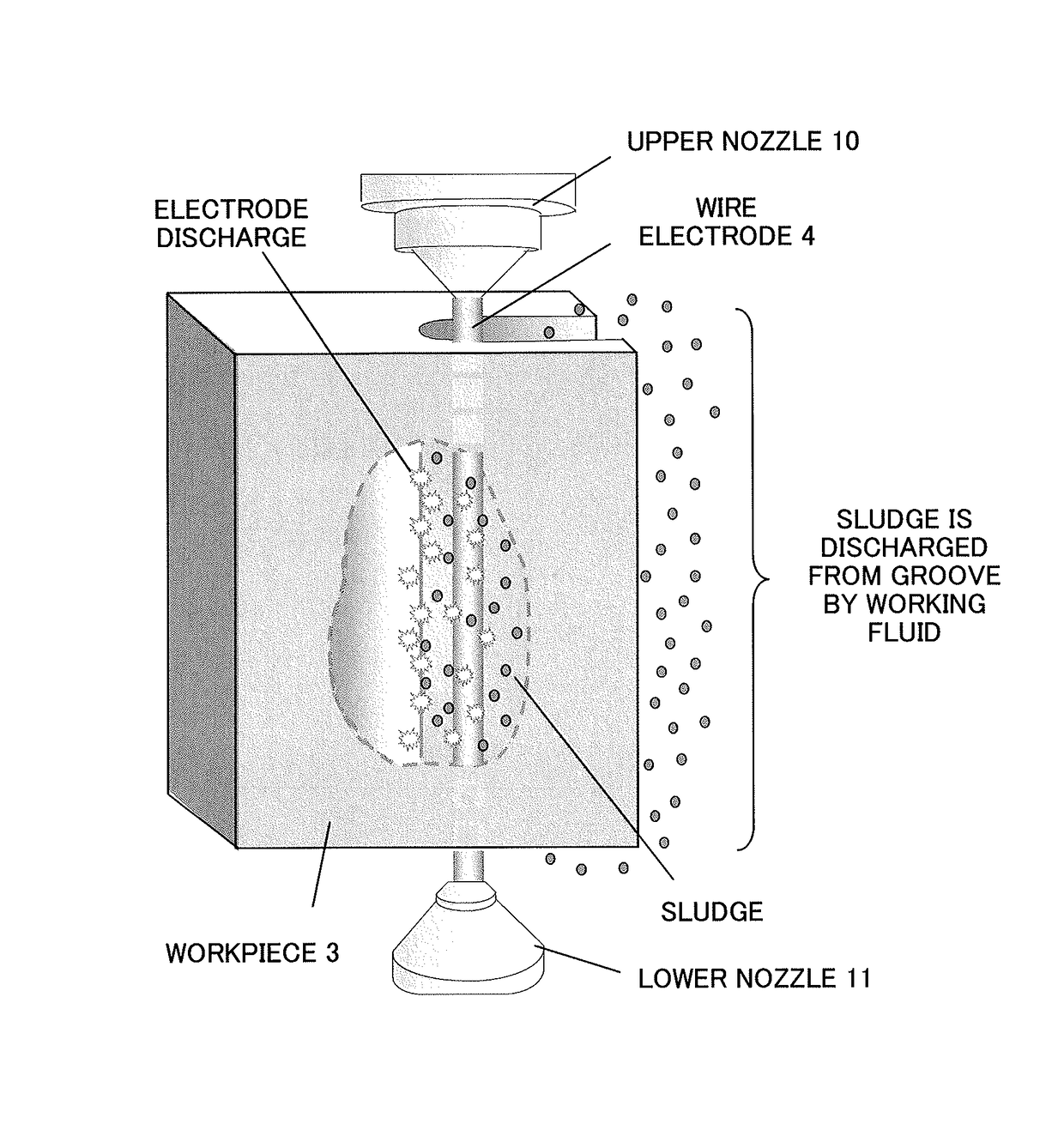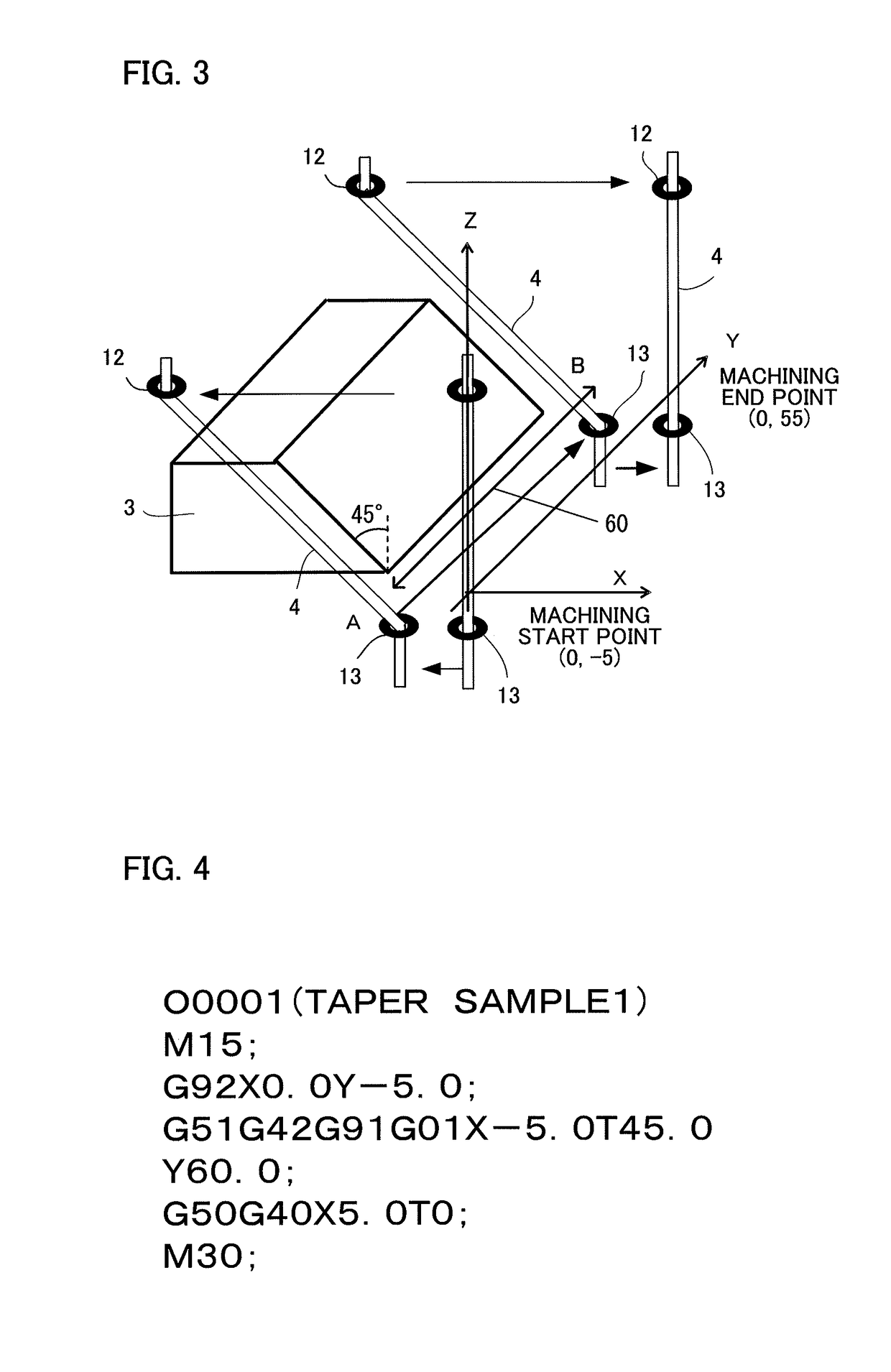Wire electric discharge machine for taper-machining tilted workpiece
a technology of electric discharge machine and taper machining, which is applied in the direction of computer control, program control, instruments, etc., can solve the problems of not being able to correct a coordinate system or a command value for machining, and the above countermeasure is unnecessary, so as to prevent or reduce the adverse effect of taper machining and avoid the effect of conventional adverse effects of taper machining
- Summary
- Abstract
- Description
- Claims
- Application Information
AI Technical Summary
Benefits of technology
Problems solved by technology
Method used
Image
Examples
first embodiment
[0140]FIG. 22 is a flowchart illustrating taper machining processing executed by the numerical controller shown in FIG. 21. The workpiece is assumed to be previously set and fixed obliquely.
[0141][Step SA01] One block of the machining program is read.
[0142][Step SA02] It is determined whether or not the read block is one that enables the coordinate system transformation function. If the block is determined to be such one, the program proceeds to Step SA03. If not, the program proceeds to Step SA11.
[0143][Step SA03] A coordinate system for taper machining is arranged with a commanded coordinate system tilt angle.
[0144][Step SA04] One block of the machining program is read.
[0145][Step SA05] It is determined whether or not the taper machining is enabled. If the taper machining is enabled, the program proceeds to Step SA06. If not, the program proceeds to Step SA09. If M15 is described in the read block in Step SA05, it is determined that the taper machining is enabled. M15 is previousl...
second embodiment
[0160]FIG. 24 is a flowchart illustrating the taper machining processing executed by the numerical controller shown in FIG. 21. Various steps of operation will be described with reference to FIG. 23. This flowchart is based on a machining program including a block that enables the coordinate system transformation function.
[0161][Step SB01] The tilt of the workpiece is set by, for example, means shown in FIG. 20.
[0162][Step SB02] A direction perpendicular to the tilted workpiece is determined by calculation.
[0163][Step SB03] The current tilt of the wire electrode is stored. According to the operation mode of the wire electric discharge machine shown in FIG. 23, the current tilt of the wire electrode is equal to the commanded taper angle.
[0164][Step SB04] One block is read.
[0165][Step SB05] It is determined whether or not the wire electrode tilt command is included in the read block. If the tilt command is included, the program proceeds to Step SB06. If not, the program proceeds to St...
PUM
| Property | Measurement | Unit |
|---|---|---|
| tilt angle | aaaaa | aaaaa |
| tilt angle | aaaaa | aaaaa |
| tilt angle | aaaaa | aaaaa |
Abstract
Description
Claims
Application Information
 Login to View More
Login to View More - R&D
- Intellectual Property
- Life Sciences
- Materials
- Tech Scout
- Unparalleled Data Quality
- Higher Quality Content
- 60% Fewer Hallucinations
Browse by: Latest US Patents, China's latest patents, Technical Efficacy Thesaurus, Application Domain, Technology Topic, Popular Technical Reports.
© 2025 PatSnap. All rights reserved.Legal|Privacy policy|Modern Slavery Act Transparency Statement|Sitemap|About US| Contact US: help@patsnap.com



